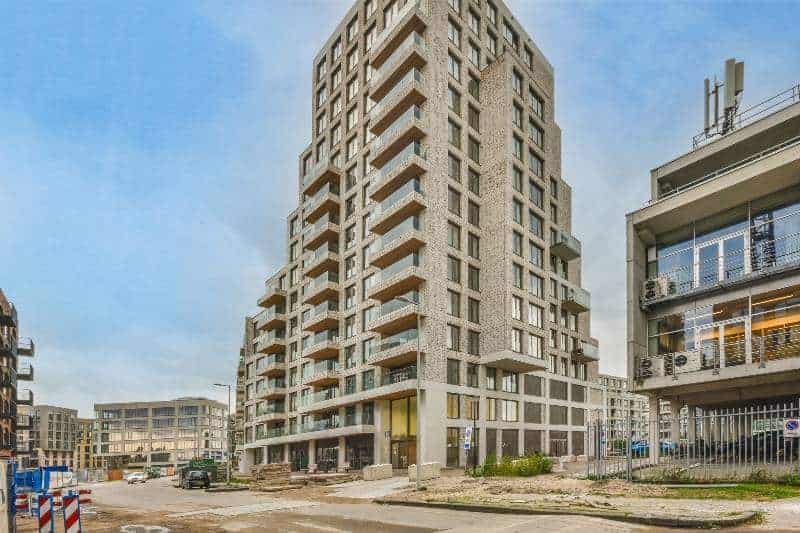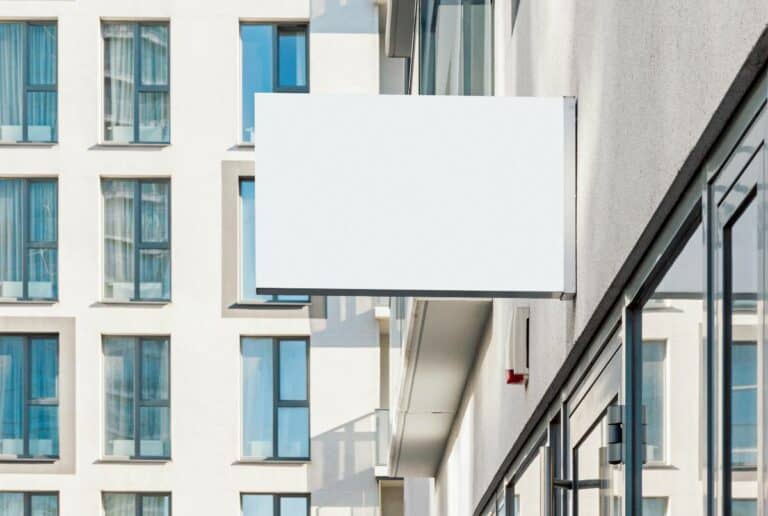Are you looking to rezone commercial property in 2024? If so, you have come to the right place! In this blog post, we will provide a comprehensive guide to the property rezoning process. We will discuss all of the steps that are involved, from start to finish. Plus, we will provide some tips on how to make the process as smooth and stress-free as possible. So, whether you are a business owner or an individual who is looking to purchase commercial property, this blog post is for you!
The Rezoning Commercial Property is a process that allows the owner of a commercial building to obtain permission from the local government for changes to the property. The process will vary depending on the type of property you own and your local government.
Key Takeaways
- The process of altering the terms of property used for a certain plot of land is known as rezoning.
- Laws vary by state, but they generally have the same goal: to manage growth and development in a way that prevents certain types of development from taking place
- The process may take several months, so it is crucial to start early and remember to ask an experienced professional who can help make the process smoother.

If you want to change the “zone” or “use designation” of your property, you need to rezone it. Those who own homes in residentially zoned areas, for instance, are prohibited from using their property for commercial reasons.
This makes it highly unlikely that you will be allowed to start a commercial egg processing facility in your backyard. Even if you have more land than you know what to do with and more eggs than you can count, commercial or agricultural activity, especially farming, is typically prohibited in residentially zoned regions.
If you had the opportunity to own a secluded four-acre wooded oasis in an outer suburb of your city, wouldn’t that be incredible? With no one around to disturb or hear them honking away, imagine having some feathered friends living on this land – chickens!
Make it even more amazing by considering rezoning it for multiple purposes; commercial/industrial applications as well as agricultural and residential plots.
What is rezoning?
Zoning is a crucial step in developing a city. The best-planned cities and towns depend on precise information about how different types of property are used in different areas. Commercial, industrial, and residential zoning all exist in the same area.
Mixed-use properties, or “live/work” places, may feature both residential and commercial sections. The process of rezoning real estate, which may be simple or difficult depending on the needs and requirements of the city, may be necessary when the government or the owner of the property wishes to alter the terms of the property’s use.
If you’re interested in rezoning into mixed-use, read here about its Pros and Cons.
You may, for instance, be the sole owner of a vast plot of land that is restricted to the construction of a single dwelling. Potentially increasing your earnings by dividing the land and constructing a second home on it.
This cannot be done legally without first submitting rezoning paperwork to the local authority. In most cases, this is the only thing that is needed for huge properties.
Benefits of rezoning commercial property
Here are just some of the benefits of rezoning a commercial property:
| Benefit | Description |
|---|---|
| Increased property value | – Property value may increase significantly when rezoning is proposed for a neighborhood – Subdividing and developing commercial, industrial, or residential properties can lead to higher profits |
| Improved business opportunities | – Rezoning can encourage economic development, especially in dense urban areas – Comprehensive rezoning projects can offer incentives for job creation and increased tax revenue – Rezoning can lead to improvements in transportation infrastructure and public spaces |
| Ability to make changes to the property | – Rezoning allows for changes in the use of existing buildings (e.g., from residential to commercial) – Property owners can make interior improvements to accommodate new uses – Rezoning provides flexibility to adapt to current market trends and technological advances |
Increased property value
There are two key factors that make rezoning land a potentially successful investment: When rezoning is proposed for a neighborhood, the value of a property might skyrocket. Either you or a developer can profit from subdividing and developing commercial and industrial properties or residential unit blocks on your land.
Improved business opportunities
In dense metropolitan regions, where rezoning can be especially challenging, competing interests, political forces, and public opinion can all drive or impede rezoning attempts. Nevertheless, cities are also places where zoning can be used to encourage economic development, leading to improvements of high quality and substantial benefits, such as new and improved transportation infrastructure, a more pleasant public realm, a more varied and affordable housing stock, and the protection of historic resources. In addition to fostering a thriving and expanding economy, comprehensive rezoning projects can offer incentives to achieve economic development goals including job creation and increased tax revenue.
Ability to make changes to the property
Rezoning commercial property allows you to change the use of an existing building from a single-family residence into an office space or retail store, for example. Additionally, rezoning Commercial property allows you to improve the building’s interior. You can make improvements in many ways with this type of rezoning because there are so many options available when looking at designs and options within the interior of a building.
You can add new features such as modern furniture or equipment that would be more compatible with current market trends and technological advances. You can also improve security features by installing bulletproof glass windows or installing motion sensors throughout the facility so that intruders won’t get too close before they’re detected.
The rezoning process
These are general steps to get your property rezoned:
Step 1: Research the local zoning laws and regulations
When you’re thinking about rezoning your property, you’ll need to research the local zoning laws and regulations. Laws vary by state, but they generally have the same goal: to manage growth and development in a way that prevents certain types of development from taking place. The zoning laws are meant to ensure that neighborhoods remain stable, rather than becoming overly dense or congested.
The process of researching your zoning laws may sound intimidating, but it’s really just a matter of knowing where to look for information.
Start by finding out what type of property you own — if it’s a single-family home or an apartment building, for example — and how much you’d be able to build on it under current zoning rules.
Then, find out who regulates land use in your area. In many states and cities, this is done by elected officials or appointed boards who oversee zoning decisions. More importantly, you need to know what kind of changes you can make and which ones are prohibited by law.
Step 2: Submitting a rezoning application
Submitting a rezoning application is one of the rezoning processes because it allows your local planning department to review proposals in detail. The purpose of submitting a rezoning application is to get an idea of whether or not a certain area should be rezoned and if so, what should be changed.
Step 3: Presenting the case for rezoning to the local government
In presenting the case for rezoning to the local government, first, your proposal must be presented to the appropriate body with enough information so that it can be evaluated properly. This means providing a lot of information about your proposal and why you are proposing it. It also means giving them enough time to consider it and make a decision.
Second, when you present your case to the local government, you must make sure they know exactly what you want them to do. You may need to explain how your proposal will benefit their community or how it will change things for residents of that area. You may even need to show them some other plans that have been proposed for similar areas in their city or county.
Third, once your case has been presented and approved by the appropriate body within your jurisdiction, you will need to submit a formal application for rezoning with all required documentation and fees paid in full before any work can begin on your project.
It is essential to create a differentiation between a rezoning and a development application.
They do not refer to the same thing at all.
You are not allowed to begin the process of applying for a development permit until you have resolved the zoning issue. If you get a head start on it, you’re going to find that it’s not accepted.
The most important thing is that you be able to present a compelling case for the rezoning. To accomplish this, you will need to have a crystal clear vision as well as plenty of data to back you up.
Step 4: Awaiting a decision on the rezoning application
The rezoning process is a long, complicated one. It is not just a matter of applying for a permit and getting the approval. The city has to make sure that the proposed rezoning will not cause any problems with property rights, traffic, noise, etc. If your application is approved, then you’ll have to negotiate with other parties about how land use should change. However, if there are any problems, the city will not approve the rezoning application.
Challenges of Rezoning Commercial Property
Here are some of the challenges concerning rezoning a commercial property:
The cost of the rezoning process
The cost of the rezoning process is a challenge for developers and property owners, who are required to pay the city a fee when they change the use of their property. In addition, developers often need to pay consultants to help them navigate the intricacies of zoning regulations and land use regulations. The cost or fee that you must pay still depends on the size of your property.
The process can be complicated, expensive, and time-consuming, especially when it comes to commercial properties.
Opposition from the community or local government
In some cases, the local government or local planning commission body may be opposed to rezoning a commercial property to accommodate a new use that they do not want. This might be because they do not want more commercial traffic in their community, or because they think that the development will have an adverse effect on the environment or on traffic flows in the area.
If you are considering rezoning your commercial property, you should always make sure that you have considered all of the issues and risks before proceeding with the project. For example, if there is any risk associated with noise or pollution from the proposed development, then you should try to work out a solution with your neighbors before proceeding further.
The time it can take to complete the rezoning process
The rezoning process can be incredibly tedious and time-consuming. There are many factors to consider, including the distance between the property and the proposed zoning area, whether it’s residential or commercial, and how much traffic an applicant can expect to generate.
The time it takes to complete the rezoning process is a major concern for many property owners. As a matter of fact, it takes approximately four (4) months or more.
In addition to the challenges mentioned above, rezoning efforts can also face resistance due to concerns about the social and economic impacts of changing land use patterns. A recent study conducted in the Greater Los Angeles region highlights the stark disparities that can arise from restrictive single-family zoning practices.
A recent study has shed light on the shocking disparities in land use and zoning across the Greater Los Angeles region. The findings, released by a team of researchers, reveal that a staggering 40.67% of the total land in the area is exclusively reserved for single-family housing. In stark contrast, a mere 11.8% is allocated for denser, multi-family developments.
The study, which analyzed data from 191 cities spanning six counties, including Imperial, Los Angeles, Orange, Riverside, San Bernardino, and Ventura, uncovered a troubling trend. As the proportion of single-family-only zoning increased in a neighborhood, so did the population of white and Asian residents. Conversely, the Latino population saw a significant decrease in these areas. The region’s Black residents also dwindled as the percentage of single-family-only zoned areas grew.
These findings echo a previous study conducted by the same research team in the San Francisco Bay Area. That investigation revealed that an astonishing 85% of residential land was exclusively zoned for single-family housing, with more restrictive zoning correlated with whiter and wealthier communities.
Stephen Menendian, the study’s co-author and assistant director of OBI, pulled no punches in his assessment of the situation. “This study is damning evidence that low-density zoning in the Los Angeles region powerfully excludes people on the basis of race and class,” he declared. “And, as we can see from the longitudinal data, is the principal mechanism for hoarding resources in ways that shape life outcomes.”
The researchers also discovered striking disparities in home prices, with median values in neighborhoods that are at least 90% single-family-only zoned ($811,492) more than double those in areas with less than 10% single-family-only zoning ($405,875). Educational outcomes, such as math proficiency, high school graduation rates, and college degrees, were also found to be better in more exclusionary communities. Even environmental health conditions, like air quality and lead exposure, were superior in these areas.
Perhaps most alarming is the clear correlation between a child’s neighborhood zoning and their future earning potential. Children born into families with incomes at the 75th percentile who grew up in communities with nearly 100% single-family zoning ended up making over $10,000 more per year as adults compared to those from families at the same income level but living in communities with 25% or less single-family zoning.
To help you better grasp the significant findings of this study, I’ve created a table that summarizes the key data points across various aspects of community life. Take a moment to review the information below, as it provides valuable insights into the far-reaching impacts of restrictive zoning practices.
| Aspect | Key Findings |
|---|---|
| Land Use Distribution | – 40.67% of total land exclusively reserved for single-family housing – 11.8% of total land available for denser, multi-family developments |
| Demographic Trends | – Increased proportion of single-family-only zoning correlates with: – Higher white and Asian populations – Lower Latino population – Declining Black population |
| Home Prices | – Median home value in 90%+ single-family-only zoned neighborhoods: $811,492 – Median home value in <10% single-family-only zoned neighborhoods: $405,875 |
| Educational Outcomes | – Better outcomes in more exclusionary communities: – Math proficiency – High school graduation rates – College degrees |
| Environmental Health | – Superior conditions in more exclusionary communities: – Air quality – Lead exposure |
| Future Earning Potential | – Children from 75th percentile income families: – Nearly 100% single-family zoning: $10,000+ more per year as adults – 25% or less single-family zoning: Lower adult earnings |
Environmental Impact of Rezoning
When it comes to rezoning commercial property, it’s essential to consider the potential environmental impact. After all, the choices we make today can have far-reaching consequences for our local ecosystems, green spaces, and overall sustainability.
On the bright side, rezoning can open up exciting opportunities to embrace eco-friendly development practices. Imagine transforming an old industrial site into a vibrant mixed-use community, complete with energy-efficient buildings, rooftop gardens, and solar panels. By making smart, sustainable choices during the rezoning process, we can create developments that not only benefit the economy but also help reduce our carbon footprint and contribute to a greener future.
But let’s not sugarcoat it – rezoning can also have some serious downsides if we’re not careful.
When we increase the density or intensity of land use, it can put a lot of pressure on our local infrastructure. More people means more strain on our water and sewer systems, and more traffic means more air pollution. And if we’re not mindful, rezoning can sometimes lead to the destruction of precious green spaces, like parks or natural habitats that are home to diverse plant and animal species.
So, what can we do to minimize the negative environmental impacts of rezoning? First and foremost, it’s crucial for property owners and developers to play by the rules. That means following all the relevant environmental regulations at the local, state, and federal levels. It might involve conducting thorough environmental impact assessments, securing the necessary permits, and adopting sustainable development practices that have been proven to work.
Speaking of sustainable practices, there are plenty of ways to make rezoning more environmentally friendly. For starters, we can prioritize the preservation and enhancement of green spaces within the development. Whether it’s incorporating parks, gardens, or natural landscaping, these green oases can help maintain biodiversity and provide a much-needed respite from the urban jungle.
We can also embrace green building features and sustainable design principles. Think energy-efficient systems, water-saving measures, and the use of eco-friendly materials. By making these choices during the rezoning and development process, we can create buildings that are not only beautiful and functional but also kind to the planet.
Another way to reduce the environmental impact of rezoning is to encourage alternative modes of transportation. Instead of relying solely on cars, we can design communities that make it easy and enjoyable to walk, bike, or take public transit. By reducing our dependence on fossil fuels, we can help combat air pollution and create healthier, more vibrant neighborhoods.
Collaboration is key. Property owners and developers should actively seek out partnerships with local environmental organizations and community groups. By working together, we can identify potential environmental concerns early on and develop strategies to address them head-on. This kind of proactive, collaborative approach can go a long way in ensuring that rezoning projects are not only successful but also sustainable.
Rezoning Commercial Property FAQs
Can I Rezone Commercial Property to Residential?
Yes, you can.
You can rezone the commercial property to residential if you have commercial use on the property and you want to convert it into residential use. This would allow for a change of use from commercial to residential so that you could sell your business and move out of your current location. However, there are many factors to consider, including zoning requirements and local building codes.
You may face challenges getting approval for a residential conversion because the property is zoned for commercial use only. If the property was zoned commercial but is now zoned residential, it must be rezoned by the city or county before you can apply for a permit. If it’s not rezoned, your plans are likely to be rejected by planning officials because they don’t fit with the existing zoning laws, zoning ordinances, and regulations in your area.
Is there a chance that my rezoning request will be approved?
There’s a chance that your rezoning request will be approved. You have to make an application for rezoning, and then the local council will decide whether to approve it. The process can take several months to complete.
You need to make sure that you’re in the right place before you start the process as there are different types of rezoning available in different areas.
Is it necessary to seek help when rezoning my property?
The short answer is yes! Many people do not understand what zoning is and how it can affect their property value. To ensure that you don’t make any costly mistakes, it’s important that you understand how zoning works.
How Much Does it Cost to Rezone a Property?
The cost of rezoning a property depends on the number of units in the proposed complex and its size. The more units you plan to build, the higher the cost.
In some areas, the fee can cost $500 to $ 5000 if your property is around 20-25 acres. It also depends on whether you’re dealing with a standard rezoning application or an unusual one that requires additional fees.
Conclusion
Rezoning your commercial property can have many potential benefits that make the process worthwhile. However, it’s important to carefully consider all the implications before making a decision.
The best way to ensure you’re making the right choice for your property is to consult with a professional who can advise you on the best course of action.
If you’re interested in learning more about rezoning and how it could impact your property, I offer consultations. Schedule a call today with me and I will be happy to talk with you about your options.
Blog Articles Disclaimer
The information presented in articles on our website or affiliated platforms is exclusively intended for informational purposes. It’s crucial to grasp that this content does not constitute professional advice or services. We strongly recommend our readers to seek guidance from appropriately qualified experts, including, but not limited to, real estate and other attorneys, accountants, financial planners, bankers, mortgage professionals, architects, government officials, engineers, and related professionals. These experts can offer personalized counsel tailored to the specific nuances of your individual circumstances. Relying on the content without consulting the relevant experts may hinder informed decision-making. Consequently, neither Tolj Commercial Real Estate nor its agents assume any responsibility for potential consequences that may arise from such action.





